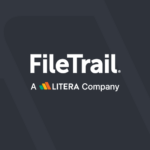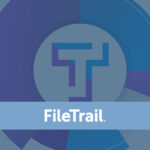
In 2016, the Legal Services Management and the Chief Knowledge Officer (CKO) at Dentons decided it was time for a major records management software upgrade. Over the course of 10+ years, Dentons had expanded across the globe and now had more than 7,700 lawyers. Managing disposition and retention of the firm’s physical and electronic records using the limited automation of multiple legacy IT system was inefficient and costly. Its records management system functionality had stagnated and was unable to meet increasingly rigorous client and regulatory information governance requirements.
Deploying a new business platform was a huge undertaking. To ensure success, Dentons teamed up with a consultant to evaluate and document current business operations and information governance requirements of the firm. This comprehensive baseline was used to objectively assess new records management systems, with the goal of assuring the upgrade would help the firm realize a significant ROI, as well as serve all stakeholders far into the future.
In this two-part series, we’ll take a look at the criteria that Dentons used to assess its options and select a records management system. Here are the questions they asked before ultimately selecting FileTrail.
DOES THE SOLUTION MEET IT TEAM REQUIREMENTS?
A new records management software solution shouldn’t require excessive IT team or expensive vendor support. Instead, routine service modifications should be accomplished by the records services staff. The platform should also readily integrate with existing and future document management, new business intake and matter management systems of the firm.
In order to meet these criteria, Dentons honed in on 100% browser-based systems that could be deployed either on-premises on securely in the cloud. Web-based systems offered these benefits:
- They don’t require IT to build and deploy complex PC software images that sap performance.
- They facilitate easy updates for both applications and databases.
Web-based systems also need to offer equivalent functionality, regardless of whether they are deployed on-premise or in the cloud. To keep implementation and support costs low, integrations with firm information managements systems need to be available ‘out of the box’. FileTrail was the only records management software that Dentons assessed which met all of these criteria.
DOES IT MEET RISK MANAGEMENT REQUIREMENTS?
By definition, the value of a modern records management system is that it reduces the risk of sensitive client and firm information exposure. It does so by helping the firm know exactly what sensitive information it possesses, who is responsible for the information, where it resides, how long it must be retained and when it should be disposed of.
When undertaking its assessment, Dentons asked whether records management systems:
- Integrated with other data management platforms (such as Intapp’s Wall, OPEN and Terms modules), enabling information governance (IG) to be applied to all data from a single platform
- Included IG tools that assured critical information was managed according to firm, client or regulatory stipulated criteria – but not over-retained which can create legal discovery or breach risks
- Met firm and client security requirements for the system hosting environment, and the application and data bases.
Records management systems vary in their ability address these vital risk management issues. If you know where sensitive information is at all times–and you apply appropriate IG controls–your risks are greatly reduced. Dentons determined that FileTrail offered the best single pane of glass to manage all file retention and disposition of the firm’s key information repositories, as well as its off-site storage vendors.
WHAT DOES THE SOFTWARE LOOK LIKE “UNDER THE HOOD”?
If you want to get a sense of the workmanship quality of the software you’re investing in, make sure to look under the hood. System architecture and coding disciplines that conform with industry best practices translate into stable platforms with glitch free releases. However, evidence of chaotic system programming and incomplete technical documentation suggests a platform supported by contract engineers who are likely limited in their information governance business knowledge or even an understanding of the full records systems platform.
Dentons evaluated vendor platform workmanship quality by:
- Asking vendors for access to general reference, technical and software release documentation
- Asking vendors to detail their development methodology and quality controls processes
Additionally, Dentons called customers and did meaningful reference checks. This meant speaking with records services managers and IT engineers having firsthand knowledge of the installed platform about the frequency of upgrades, technical installation effort required and the ease of user adoption of new features. With more than 20 years in the records management industry, FileTrail got the highest marks for both its information governance industry expertise, and quality of system design and development.
IS THERE A SOLID TRACK RECORD OF ENHANCEMENTS?
An organization’s system investment goes beyond the functionality and technology of the current software release. Dentons wanted to assure its records management system was ‘future proofed’. If software stagnates, the firm ends up patching together manual processes to support changing business operations and ultimately has to replace the platform sooner than anticipated.
In order to evaluate not just the frequency of software updates, but the enhanced business value delivered to the firm, Dentons asked these questions:
- Do updates demonstrate that the software is evolving in tandem with changing governance requirements and technology?
- Which enhancements were delivered at no additional cost to customers, versus offered as an add-on to existing license fees?
- Do enhancements demonstrate customer input to both new feature functionality and user interface design?
Rather than accepting a software sales reps’ assurances of future enhancements, look to the track record of system providers and review the technological and functional enhancements of software platforms for at least the past 3 years. Dentons was impressed by FileTrail’s extensive history of upgrades.
In Part 2 of this series, we’ll leave behind the IT and delve into other important records management system assessment criteria, including vendor strengths, contract considerations, and cost of ownership.




